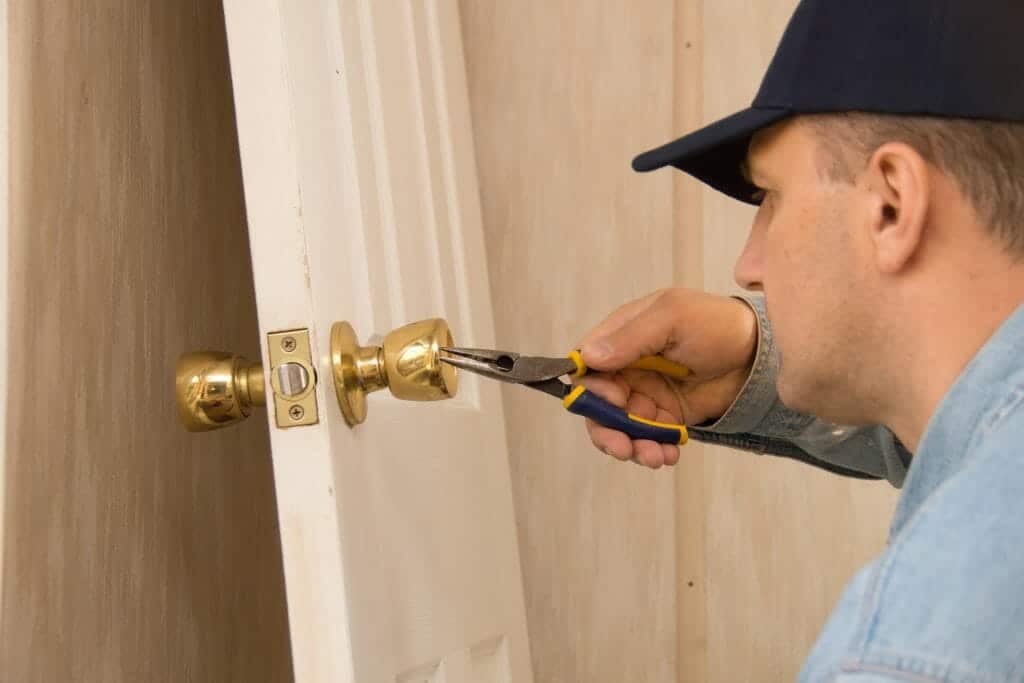Have you ever shut the door locked behind you only to realize you’ve left the keys inside? It’s a situation many of us have faced at some point in life. Being outside and looking in, trying to see if the appliances suddenly come on in your absence, or if you’ve left anything plugged in that should be turned off. Some people start to panic, while others take charge of the situation.
10 tips to get in or out without keys
1. Ask for help
If you live with friends, family or are one of those people that keep a spare set of keys with a family member, call them to see if they can come over and help. It might inconvenience them, but you’ll be more frustrated, angry and flustered the longer you spend sitting outside.
If you live in an apartment complex, your building manager will most likely have a spare copy which they’ll happily give you when you provide an I.D card.

2. Look for any open windows
First-floor windows are easier to access and climb through, but most likely they’ll be locked from the inside. Alternatively, if you’re locked inside and live on the first floor, you can use this window to climb out. Most people living on the second floor don’t bother to lock the window, as burglars rarely bother with those. If there is a ladder close by, use one. Look for trees, trellis or anything else that is very stable. If it’s a side-hinged window, you might be able to open it with a thin tool.
3. Try the pet door
When the windows are locked, you could try the pet door if you have one. We’ve heard stories of people who were able to squeeze in with a little wiggling. This only applies to people of small build though. You’ll probably have to weigh under 50-55kg to pass through a pet door.
4. Ask your neighbour for a screwdriver
Everyone has a story about locking themselves out, so your neighbour probably won’t be surprised when you ask for a flathead screwdriver. If there’s a small gap, partially pry open your window to reach inside and open the lock.
5. Remove the window beading
Around the window frame, you’ll find a metal or plastic strip where you can insert a screwdriver at a corner of the beading channel and open it gently. Use your hands to pull it free when it’s completely loosened.
Be aware that removing the beading usually requires replacement, and beading is expensive. You’ll probably have more luck if your window doesn’t have beading. Before removing the beading, check window corners to see if the vertical and horizontal beading overlap. Remove the overlapping beading first.
6. Bump keys
If your home has the common lock system, a bump key could do the job. These are special keys for unlocking pin lock systems, the kind you’ll find in most homes. The key ridges of the spring-loaded system push the pins on the other side to open the lock.
7. Paper clips, butter knife and bobby pins
Get creative with anything you have on your person that could pick the lock. A paper clip, butter knife or bobby pins are makeshift lockpicks that work with a basic multitool.
8. Credit cards
Beware, this technique only works on a standard spring lock. Deadbolts are more secure and won’t budge. If you don’t want to risk your precious credit card, any plastic card that’s flexible works. We usually advise people to use thick laminated cards, because they’re very flexible and you won’t miss it if anything goes wrong.
- Find the point where the latch is located and insert the card between frame and door.
- Hold the card perpendicular to the door. Push and wiggle, whilst bending the card from the doorknob to slide the latch away from the door jam. Remember to use your body weight to push against the door as you bend the card.
If this works, call a locksmith ASAP. Imagine how easily a burglar will unlock your front door if you can do same with little effort. You’ll also need to upgrade to a more secure lock system. Your locksmith will recommend options ideal for your home setting.
9. Use a hammer
Use a hammer if you have an older lock that isn’t a deadbolt one. With your hammer, hit the door with a strong downward blow to the knob. This will remove the door mechanism and subsequently open the door. Using this method means you won’t be able to lock the door from the outside until you replace the doorknob. It looks suspicious when attempting this method, as neighbours might think that someone is robbing your apartment. Only use this method when you absolutely have to.
10. Try the garage door
If you have a spare wire hanger in your car or a neighbour willing to lend you one, you can use it to open your garage door. Any moldable or thin wire (used in electrics) works fine.
Bend the wire, keep the rod long and double it with a branch to make it sturdier. If your garage has a tiny opening or space at the top, pass the rod hook part or insert it through the sides, where possible. Watch out for the soft plastic moulding to ensure your rod doesn’t damage the door. Garage doors are expensive to replace.
The latch for manual release is usually at the point where the arm of the garage door opener links to the track. Applying firm pressure, manoeuvre the hook and pull it until the latch disengages.
Call your local locksmith
The landlord is out of town, your roommates are too far to visit and you don’t have a backup set of keys, or the above methods don’t work. So, what’s the safest thing to do? Call a locksmith! They’ll take out the lock, let you in and change it for you. Be careful when reaching out to a locksmith though. If you call an inexperienced locksmith, who damages the door jamb or door, your building manager or landlord will hit you with a fine.
Conclusion
When you gain access to your home, take preventive measures to ensure you won’t get locked out again. Or that at least next time you’re locked out, you can gain easy entrance. Keep a spare key with your concierge if you trust him.
Also, keep one in your car and give another spare key to a neighbour or friend who doesn’t live too far from you. If you don’t trust your neighbours, find a unique hiding spot where no-one would ever think to look. Before you leave or enter your home, always have your phone, keys and wallet on your person.

